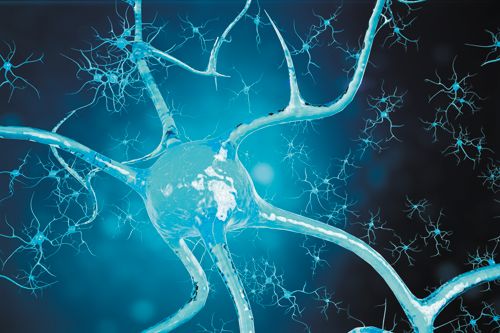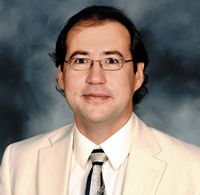Chiral Chromatography in Antiepileptic Drug Development and Epilepsy Therapy
The Column spoke to Arcadius V. Krivoshein, Assistant Professor of Chemistry at the University of Houston–Clear Lake, USA, about his work developing EPP, an experimental anticonvulsant that can help to stop convulsions during epileptic seizures, and the role of chiral HPLC in this research.
Photo Credit: Rost9/Shutterstock.com

The Column spoke to Arcadius V. Krivoshein, Assistant Professor of Chemistry at the University of Houston–Clear Lake, USA, about his work developing 3-ethyl-3-phenylpyrrolidin-2-one (EPP), an experimental anticonvulsant that can help to stop convulsions during epileptic seizures, and the role of chiral high performance liquid chromatography (HPLC) in this research. - Interview by Kate Mosford
Q. In a recent study, you discussed the development of 3-ethyl-3-phenylpyrrolidin-2-one (EPP), an experimental anticonvulsant for epileptic seizures. What are the possible benefits of EPP in epilepsy treatment?
A: The two main challenges in the pharmacotherapy of epilepsy are drug resistance and side effects. For example, seizures in 25–30% of patients cannot be controlled using the medications that are currently available. EPP addresses both of these challenges-it is active in animal models of drug-resistant epilepsy and at the same time it is safe. Our collaborators at the Epilepsy Therapy Screening Program, which is part of the US National Institutes of Health, are currently conducting an in-depth testing of this compound. We also filed a provisional patent for several novel fluoro substituted compounds structurally similar to EPP.
Q. Can you tell us more about the role of chiral high performance liquid chromatography (HPLC) in this research?
A: Enantiomers of chiral drugs may differ from each other and from the racemate in their pharmaceutical and pharmacological properties. It is therefore important to compare the properties of racemic and enantiopure forms of a given compound. We used chiral HPLC on a polysaccharide-based stationary phase to resolve, on a preparative scale, the enantiomers of EPP. Having both of the enantiomers (R and S) as well as the racemate allowed us to establish that the enantiopure forms of EPP are substantially more stable thermodynamically than the racemic form. Our structural studies indicate that the different patterns of hydrogen bonding may be responsible for this difference in stability.
It is also important to highlight that HPLC is useful not only in pharmaceutical R&D, but also in clinical practice. For example, chiral liquid chromatography–mass spectrometry (LC–MS) could be used to monitor EPP concentrations in the blood of patients. This type of monitoring is important for achieving the optimal therapeutic effect while keeping side effects to the minimum.
Q. What is novel about your approach from an analytical perspective?
A: A hallmark of our approach is the combined use of chromatographic and structural techniques. In this case, chiral HPLC was used together with single-crystal X-ray diffraction (XRD), circular dichroism (CD) spectroscopy, and infrared (IR) spectroscopy. This combined approach allows for a more reliable determination of the stereochemistry of these compounds.
Q. Were there any results that surprised you?
A: HPLC in reversed-phase mode typically gives the best resolution and, therefore, accounts for about 80% of all analytical HPLC separations. We were surprised to find that in this case the much less commonly used polar-organic mode of elution worked better. We would be interested to further explore this mode of HPLC in our studies of other compounds that are structurally related to 3-ethyl-3-phenylpyrrolidin-2-one.
Q. What is your group working on next?
A: We are continuing our systematic structural studies of various α-substituted acetamides, lactams, and cyclic imides, aiming at developing a predictive understanding of pharmaceutically-relevant physicochemical properties of these drugs. At the same time, we plan to apply chiral HPLC to other interesting problems, such as the question of whether metabolism of EPP and related compounds in the body is stereoselective.

Arcadius V. Krivoshein received his Ph.D. degree in bioorganic chemistry in 1998 from the Institute of Bioorganic Chemistry, Russian Academy of Sciences (Moscow, Russia). He completed his postdoctoral studies at Cornell University (Ithaca, New York, USA) with the late George P. Hess, studying chemical kinetics of neurotransmitter receptors. In August 2016, he joined the University of Houston–Clear Lake (Houston, Texas, USA), where he is currently an Assistant Professor of Chemistry.
E-mail:krivoshein@uhcl.eduWebsite:https://www.uhcl.edu/science-engineering/faculty/krivoshein-arcadius

Study Explores Thin-Film Extraction of Biogenic Amines via HPLC-MS/MS
March 27th 2025Scientists from Tabriz University and the University of Tabriz explored cellulose acetate-UiO-66-COOH as an affordable coating sorbent for thin film extraction of biogenic amines from cheese and alcohol-free beverages using HPLC-MS/MS.
Quantifying Microplastics in Meconium Samples Using Pyrolysis–GC-MS
March 26th 2025Using pyrolysis-gas chromatography and mass spectrometry, scientists from Fudan University and the Putuo District Center for Disease Control and Prevention detected and quantified microplastics in newborn stool samples.














